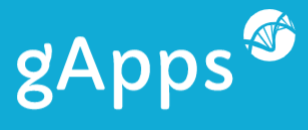Turning your clinical pathway into a mobile app
It has been reported that health and wellbeing applications are estimated to make up approximately 40% of new smartphone apps currently being developed. Health and medical related apps have the potential to be adapted and used by healthcare professionals, helping to revolutionise the sector and reflect the digital age we live in.
There has also been a lot of discussion around providing HCPs with greater access to clinical pathways and care maps so that they can easily check medical guidelines on the go to help ensure that they are implementing a specific task in-line with best practice.
So, does it make sense for healthcare organisations to create handy mobile apps that HCPs can quickly and easily access on their smartphone so that they can check to make sure that they’re following the correct procedure?
Here are 5 key areas for you to consider that will help you to make an informed decision.
1. Does the pathway already exist already?
Because clinical pathways exist to promote efficient patient care based on evidence based practice they are more often than not available in a paper format but trying to track them down can be difficult. If the pathway already exists in paper based format then it’s more than likely that the pathway can be re-produced to work as an app, providing that there is a clear process that can be followed.
2. Can the pathway be used in its current format or does it need modifying?
Generally clinical pathways refer to medical guidelines. However a single pathway may refer to guidelines on several topics in a well specified context, for example both paediatric and adult pathways for a single indication, so it’s important to imagine the user and the point at which they may need to engage with the pathway. If the pathway is overly complex covering a number of topics, can it be reproduced in a number of different flavours making it easier for the end user to access the correct pathway more quickly?
3. Additional help information and any other relevant reference points.
Using the devices functionality a user will be guided through the process by answering relevant questions about the patient and their symptoms. In some cases the answer may not be entirely clear but developing the pathway as an app allows you to include additional information in the form of text, images and video to help clarify points and questions. In addition to this if there are other reference points that are relevant to the pathway, links can be built into these to help provide further explanation.
4. Test the app with local teams to check its effectiveness, sign off and launch the app and tell everyone about it.
As with any new tool, it’s important that you test it thoroughly before launching it for use by the whole of the department/organisation. Testing should involve making sure that each end-user can fully complete each specific task on the app that you set them. If they are unable to do so then you will be able to identify whether the app has a technical glitch or if the user journey is not clear and thus making it confusing for the end-user to complete the task. It’s also important to make sure that if the app is designed for use on multiple devices and operating systems, i.e. iPhone, Android, iPad, Blackberry, Microsoft etc, then make sure that you have users in your testing group that will be trialling the app on each of the devices and platforms that you will want the app to work on.
5. Track usage and improve the app where necessary
Even when the app is ‘live’ and in use it’s still important to capture data on its usage and give end-users the opportunity to submit feedback to highlight any glitches or possible areas for improvement. Your end-users can provide you with some useful insights into additional features and functionality that could help make the app even more useful and this can help to encourage more people to download it.

